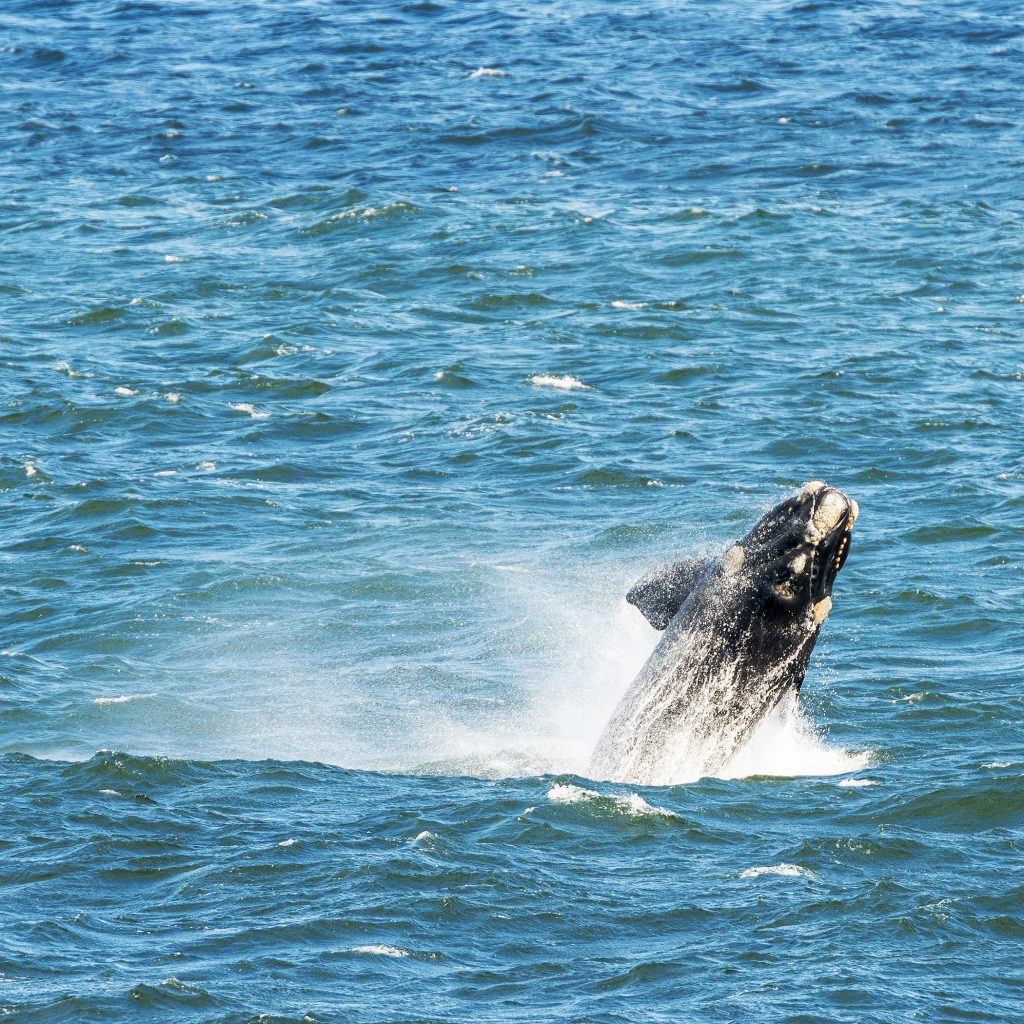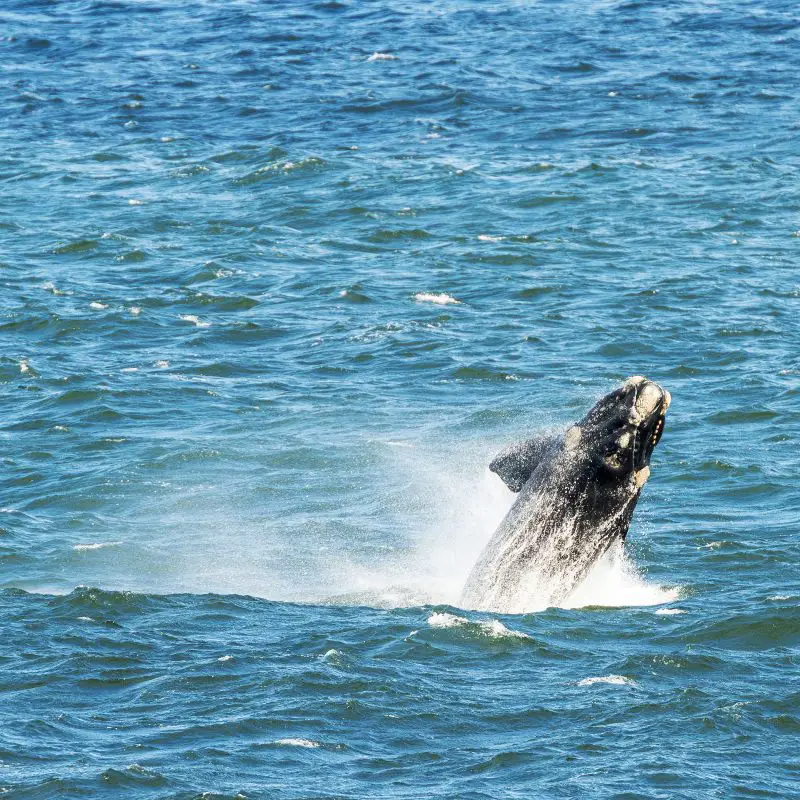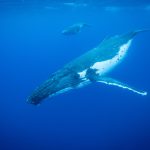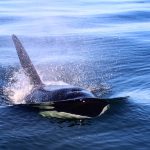Most big whales are omnivores. They eat both zooplankton and small fish, which they find in vast swarms or schools, and feed at the bottom of the food chain. Zooplankton is eaten by Right Whales (Eubalaena).
Water copepods (a type of tiny crustacean) and other microscopic zooplankton can be strained by their finely fringed baleen.
A Right Whale’s food consists primarily of krill (a small shrimp-like crustacean) and copepods. Rorquals eat a broader variety of prey than right whales.
They eat a variety of small squids, crustaceans, and small schooling fishes, depending on the species. Krill is the main food of blue whales.
Krill, squids, copepods, and a diversity of small schooling fishes are all eaten by fin whales. The main prey of humpback whales, Minke whales, and Bryde’s whales is krill and small schooling fish. Minke whales are present in the northern hemisphere and eat krill, while those in the southern hemisphere eat small schooling fish.
Copepods, krill, and amphipods are eaten by sea whales (another type of small crustacean). They also eat squids and small schooling fish in the North Atlantic and North Pacific Oceans.
Gray whales feed largely on bottom-dwelling crustaceans, primarily amphipods and maybe marine worms. Some whales’ diets are thought to be influenced by food availability.

What is Whales Food Intake?
During the summer, most baleen whales spend four to six months feeding vigorously in high-latitude, productive seas. They will roam and breed over the following six to eight months.
During the feeding season, scientists estimate that giant baleen whales consume roughly 4 percent of their body weight every day. During the feeding season, food intake exceeds daily requirements, and the excess energy is restored as fat, most of which is found in the blubber.
For around 120 days, a blue whale consumes up to 3,600 kg of krill per day. A blue whale’s stomach is estimated to hold 1,000 kg of food.
During a 128 to 145-day feeding season, grey whales consume about 150,000 kg of food, with an average daily consumption of about 1,089 kg (2,400 lbs.).
A grey whale’s stomach is estimated to hold 300 kg of food. During a feeding season, grey whales gain between 16 and 30 percent of their total body weight.
Baleen whales consume very little or nothing during the migrating and mating seasons. The whale survives the winter months on blubber accumulated throughout the feeding season.
The thick blubber layer of baleen whale stores fat; it serves as an energy reserve during the traveling and breeding seasons.
The daily feeding rate in the winter is only 0.4 percent of body weight.
A blue whale’s body mass is 27 percent, a fin whale’s 23 percent, a sea whale’s 21 percent, a grey whale’s 29 percent, and a right whale’s 36 percent to 45 percent. So, this is the food intake that big whales take in their diet.
Are Sharks a Part of a Whale’s Diet?
Whales feeding on sharks is a rare occurrence in nature. While some species of sharks may fall prey to certain types of whales, it is not a common or regular part of their diet. Whales primarily consume small organisms including plankton, krill, and small fish. Their feeding habits greatly differ from that of sharks, which generally feed on various marine creatures.
What Methods Do They Use In Eating And Collecting The Food?
With its mouth open, a whale “grazes” by swimming slowly through all zooplankton (animal plankton). This is known as “skim-feeding” on the surface, but right whales also feed underwater. A hole in the front baleen plates allows water and zooplankton to enter a right whale’s mouth. Water travels through the baleen and outside of the mouth, catching zooplankton in the finely edged baleen mat.
Right whales have lengthy baleen plates and a large mouth, making them well-suited to straining large amounts of food.
Right whales normally feed alone, however, a group of whales can swim and feed in a V shape. Rorqual whales eat by gulping down large amounts of prey and water. A throat rororqual overs expands as its mouth fills, and its mouth cavity inflates outward. The whale then closes its jaws and contracts the grooves in its throat, forcing the water out.
Water is driven through the baleen and outsides of the mouth, catching prey like krill and small fishes in the baleen mat. Rorquals can feed at the water’s surface or depths. Some rorquals have been seen moving or pushing prey swarms toward their mouths with their tail flukes.
To aid in feeding, humpback whales have been observed blowing “bubble nets.” The whale dives to the bottom, then swim up in a spiral, blowing air bubbles out of its blowholes. The bubbles rise in a column, trapping the prey inside.
With its mouth open, the whale rushes up through the center of the column. Several humpback whales have been witnessed lunging up through a “bubble net” one at a time, according to observers. Sea whales have been seen skimming the surface of the water, just like right whales.
Gray whales primarily graze on the ocean floor. A grey whale suckles water, dirt, and bottom-dwelling crustaceans prevalent in ocean sediments while it rolls on its side. The short, coarse baleen mat of a grey whale catches prey like amphipods and marine worms. Water and mud pass through the baleen and out the other side.










